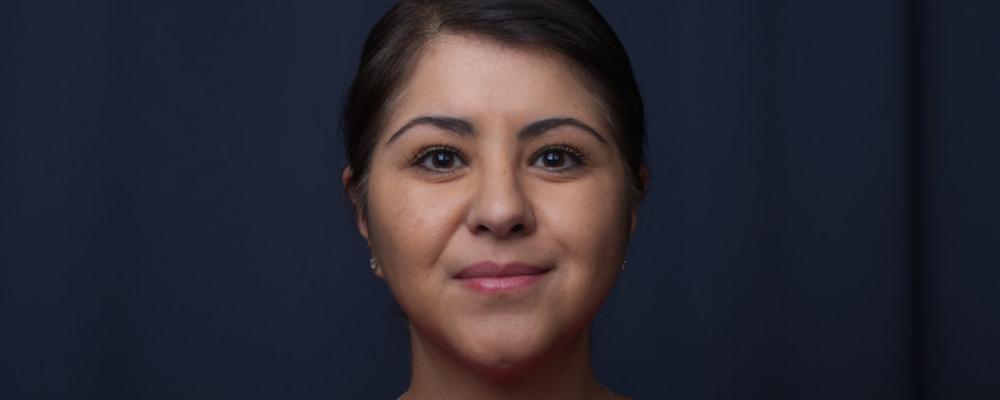
Aishe Sarshad wants to solve the mystery of nuclear RNA interference and find new treatments against cancer.
Aishe Sarshad is researcher at the Institute of Biomedicine, University of Gothenburg. She is also a part of the Wallenberg Center for Molecular and Translational Medicine (WCMTM). Aishe’s research group focus on nuclear RNA interference and how that can be used in cancer treatment.
What’s your research about?
‘I study Argonaute proteins in the nucleus. These proteins have well described functions in the cytoplasm of the cell, but their presence and role in the nucleus is not fully understood. Argonautes together with small RNAs regulate gene expression in a process called RNA interference (RNAi). RNAi in the nucleus is a new and open field of research, and there is a big potential for finding new treatments for different diseases.
What big scientific questions are you working with?
‘My scientific interest lies in understanding the mechanism of nuclear RNA interference to unravel the basic mechanism of nuclear gene silencing.
‘We recently discovered that key factors important for RNAi are expressed in the nucleus of embryonic stem cells. Our current work aims at decoding the regulatory pathways of nuclear RNAi. Specifically, we want to understand why stem cells need nuclear Argonaute-small RNA complexes for gene regulation and how these play a role during stem cell differentiation and reprograming. We further aim to understand if nuclear RNA interference can be used in cancers as a way of targeting aberrantly expressed nuclear factors important in cancer development.
What’s your scientific background?
‘I received my PhD from the Karolinska Institute and graduated in 2014. I studied transcriptional control of actin and myosin in the cell nucleus. After my PhD I wanted to move my science into a somewhat broader field, since my PhD-thesis was quite niched. After searching for different labs to do my post-doc studies in, I got the opportunity to visit three different labs at the National Institutes of Health (NIH), USA, of which I was offered a position in two of them. My dilemma was then which lab I was going to choose. One lab was well established, while the other was relatively newly started. The choice fell on the new lab with Principal Investigator (PI) Markus Hafner, as his first post-doc. Markus introduced me to the controversial question concerning Argonaute proteins in the nucleus, which was not universally accepted at that time. I just leaped into it, with his help, and I am still working on this question today in my own lab.
What’s the vision for your research group?
‘A vision of mine is to rewrite textbooks to include that RNA interference is also a nuclear event. My personal vision as a researcher is to do reproducible science and to have a standing in the scientific community as a lab that produces good science.
Why did you start researching?
‘Since I was a child I was supposed to be a doctor, but I found out that you could work behind the scenes and produce drugs to help patients in a different way. From home, I got to understand the importance of education. This was a big driving force when I was a child, but now I just want to solve this mystery of nuclear RNA interference. These mechanisms could be used to silence genes in cancer. In 2018 two siRNA based drugs where approved, and there are hundreds more in clinical trials. RNAi based drugs for nuclear targets could be even more potent and effective, and this is some of what my team is studying.
Who do you collaborate with?
‘Before the Covid-19 pandemic, I had several collaborations with groups in the USA, but all that has been put on hold until now. Meantime I have developed my collaboration locally at the University of Gothenburg with researcher such as Carolina Guibentif, Davide Angeletti and Linda Johansson. I am also part of the Wallenberg Center for Molecular and Translational Research (WCMTM), which is an important resource for me, as it is so great to have a network with WCMTM PI:s.
‘Attending conferences is important for young scientists and I found most of my collaborations there. It is also important to have the opportunity to visit labs to find post doc positions.
March 2022
Interview: Niclas Lundh
More information can be found on Aishe Sarshad’s research page at gu.se and on Sarshad Lab.
More about Aishe Sarshad
- Age 40
- PhD at Karolinska Institute, 2014
- Postdoctoral fellow with Dr Markus Hafner, National Institutes of Health (NIH), 2014-2018
Current Funding
The Swedish Research Council (Vetenskapsrådet), Swedish Society for Medical research (SSMF), Knut and Alice Wallenberg Foundation, Åke Wiberg Foundation, Jeanssons Foundation, Carl Trygger Foundation, Emil and Wera Cornell Foundation.
Awards and prizes
L’Oréal-UNESCO for Women in Science Award, 2019.
Page Manager: webb@biomedicine.gu.se